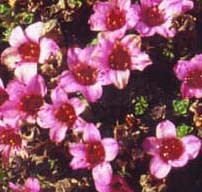How do you do your science?
The way I tend to think my kind of earth science should be done
1) Sit down, read literature, think of interesting problems and come up with a suggestion for a study
2) Go in the field to collect data
3) Type up field notes, organise waypoints, photos, sketches and samples
4) Spend many hours in the office bent over said data thinking up explanations for variations, comparing data from different sites and looking up references in the literature.
5) Carefully draw clean versions of figures to go into papers and presentations and write up the findings.
What the process (and division of time between tasks) really looks like these days
1) Meet with some random friends and colleagues and throw some ideas around at a meeting or a party or both, chat to another colleague over email, do some sketching on the back of a piece of paper, send some emails back and forth to people who may or may not be collaborators some day and bingo at some point a project idea has emerged.
Secure funding
Plan logistics, buy tickets, get permissions, buy and get together equipment, organise maps, food, safety gear, people, travel plans. Pack. Travel.
2) Advise students and other newcomers, buy food, gas, equipment, stuff, whatever. Do some field work and collect some data. Organise logistics and plans for the following days. Talk to people, make arrangements for next years field season. Discuss potential developments of future projects.
3) Type up field notes and organise data in small one hour increments throughout the year or in a frantic last minute sprint come May. Meanwhile tell students about the importance of keeping good field records.
4) Throw some ideas around at conferences or workshops with colleagues, prepare some preliminary figures when getting stuff together for talks or lectures, prepare some preliminary figures for co-authored talks given by colleagues, throw some more ideas around when talking to people about other things or while discussing writing projects. Travel to meet with collaborators and maybe collaborators and discuss potential presentations, collaborations, publications and some research ideas. Occasionally jot down ideas or outlines for manuscripts or put aside articles that will be relevant.
5) Start working on a paper based on various preliminary figures and descriptions used in presentations and more or less well organised field data. Do some literature searches and read up on the literature that seems most important. Draw final figures and write up the work. Meanwhile think about the implications of the study and how this can be developed into new projects.
I sometimes think about what happened to reading and actual analysis of data, but hope that discussions and presentations is just a different way of working through the material.
How do you do your science?



2 Comments:
This is fantastic information for blog. I really love the way infomration presented in your post. I have added to you in my social bookmark…and i am w8ing ur next post.
Cool release!I was very very appreciate to read your writings. Enjoy your writing styles. Thank you for sharing .
sell my house
Post a Comment
<< Home